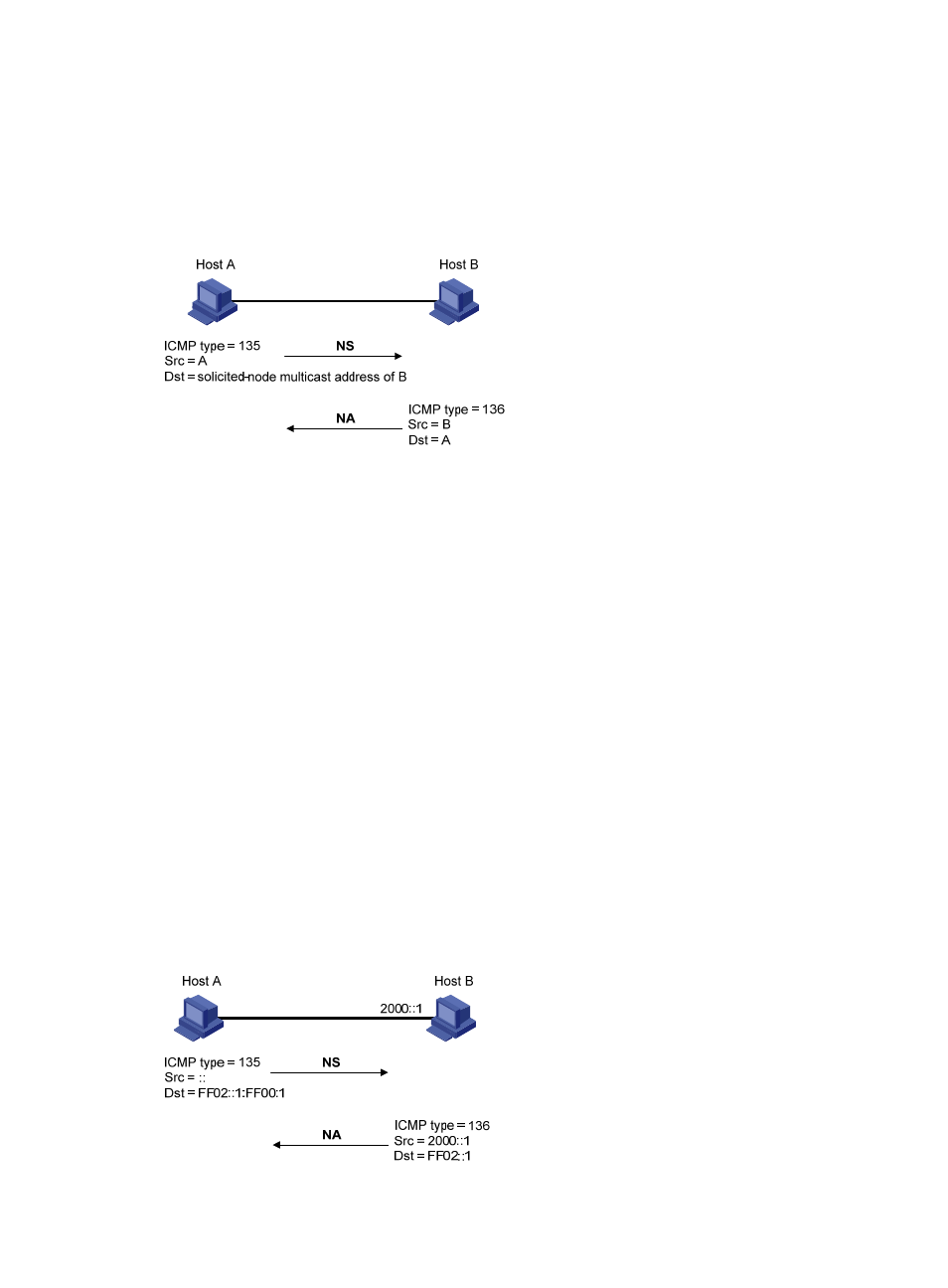Address resolution, Neighbor reachability detection, Duplicate address detection – H3C Technologies H3C S12500 Series Switches User Manual
Page 151

137
Address resolution
This function is similar to the ARP function in IPv4. An IPv6 node acquires the link-layer addresses of
neighboring nodes on the same link through NS and NA message exchanges.
shows how
Host A acquires the link-layer address of Host B on a single link.
Figure 59 Address resolution
The address resolution process is:
1.
Host A multicasts an NS message. The source address of the NS message is the IPv6 address of the
sending interface of Host A and the destination address is the solicited-node multicast address of
Host B. The NS message contains the link-layer address of Host A.
2.
After receiving the NS message, Host B judges whether the destination address of the packet is its
solicited-node multicast address. If yes, Host B learns the link-layer address of Host A, and then
unicasts an NA message containing its link-layer address.
3.
Host A acquires the link-layer address of Host B from the NA message.
Neighbor reachability detection
After Host A acquires the link-layer address of its neighbor Host B, Host A can use NS and NA messages
to check whether Host B is reachable.
1.
Host A sends an NS message whose destination address is the IPv6 address of Host B.
2.
If Host A receives an NA message from Host B, Host A decides that Host B is reachable. Otherwise,
Host B is unreachable.
Duplicate address detection
After Host A acquires an IPv6 address, it performs Duplicate Address Detection (DAD) to check whether
the address is being used by any other node (similar to the gratuitous ARP function in IPv4). DAD is
accomplished through NS and NA message exchanges.
shows the DAD process.
Figure 60 Duplicate address detection